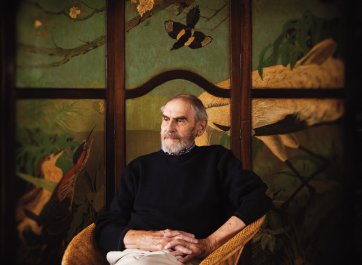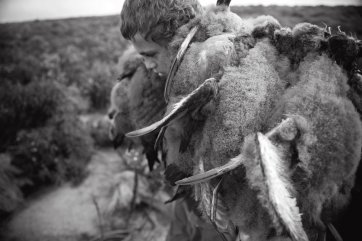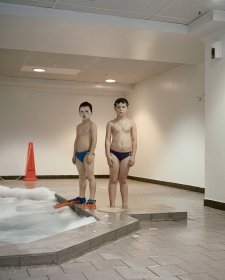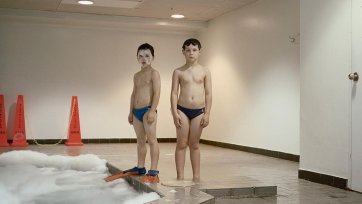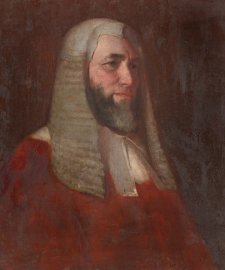Many of the portraits in the third National Photographic Portrait Prize evoke moments of defining self realisation and powerful self awareness. They depict sitters for whom the unashamed voicing of these statements seem entirely apt: this is who I am becoming; this is who I am.
For the 2010 exhibition my fellow judges Ms Joanna Gilmour, Assistant Curator, National Portrait Gallery; and Ms Kim Machan, Director, Multimedia Art Asia Pacific; selected forty-three finalists from 1 000 entries. With the generous support of Visa, the National Portrait Gallery is offering a prize of $25 000 for the most outstanding photographic portrait. We selected Scott Bycroft’s portrait Zareth as the winner of the National Photographic Portrait Prize 2010. Bycroft’s portrait stands out for its immediacy and power and for its direct presence. The subject, Zareth Long, projects an uncompromising gaze. The portrait is a strong and positive representation of youth.
In contemporary Western culture there is an expectation that possessing a distinctive self identity is natural and desirable. Where it was once the case that individual identity was largely imposed by family, social or class roles, in modern society selfhood is something to be explored and performed as singular and unique. Contemporary expressions of self identity continue to be informed by cultural and social factors. ‘Innate dispositions exist,’ educational psychologist Jere Brophy wrote recently, however ‘many and probably most dispositions are acquired through cultural, social, and experiential mechanisms in which little or no genetic predisposition is involved.’ The values of community and family and our internalisation and expression of gender roles influence our formative sense of self identity. From age two we respond to and project gendered identities based on cultural expectations of male and female gender roles.
At adolescence self realisation presents itself with uncompromising intensity. Courage, fear, anxiety, and longing rise with the magnitude and subtlety of ocean tides. A stark awareness of our sameness and difference to others is manifest, complicated by the presence of an emerging emotional vocabulary that struggles to articulate new feelings. The familiar tensions inherent in the need for continued protection and affection, social expectations of conformity, and strong desires for self exploration and individual autonomy were first characterised in 1904 by the American psychologist G Stanley Hall as ‘storm and stress’. At adolescence self realisation is a process that makes us aware of the consolidation of our maturing self identity: this is who I am becoming.
Identity is not fixed. We can experience self awareness as something that continues to grow. The cultural frameworks for understanding identity change too. ‘As we learn more about contrasting views on self and identity,’ Jere Brophy writes, ‘we will come to view a synthesis of currently contrasting views, rather than the currently prototypical Western view, as ideal.’ Many of the portraits in the exhibition evoke the power of self awareness. They possess an unembellished frankness and sense of intimacy. The photographers’ vision is one of sensitivity and clarity. The portraits evoke diverse experiences and defy conventional stereotypes. Perhaps the affective power of many of the portraits in the exhibition is the result of their communication of authentic lived experience, and importantly, the photographers’ respect and tender regard for their subjects.


